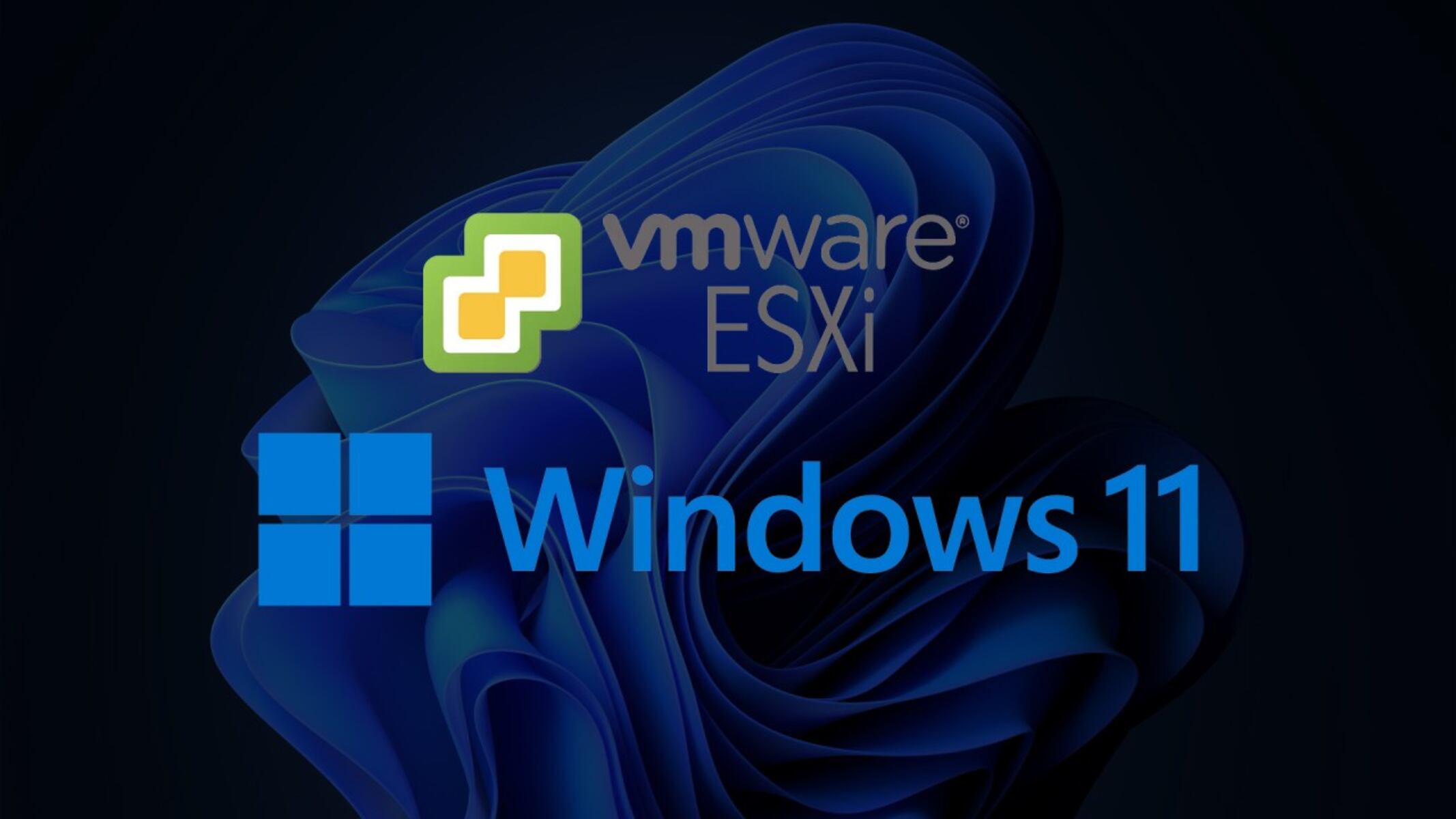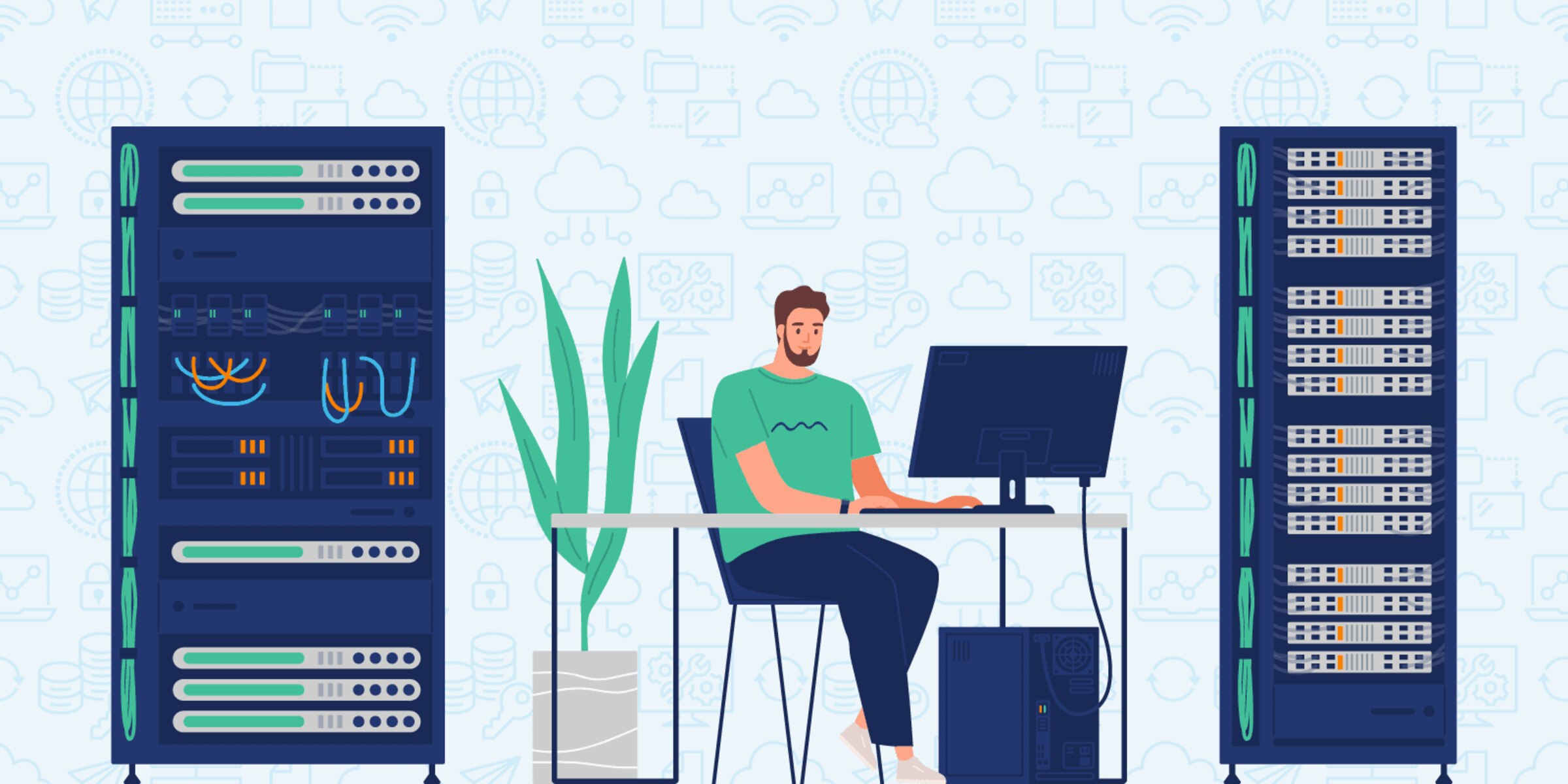Introduction
Welcome to the world of networking! In today’s fast-paced and interconnected digital landscape, having a reliable and efficient network is crucial for any business or individual. While servers are often associated with managing network operations, it is possible to transform a workstation network into a server-like setup, providing enhanced functionality and productivity. In this article, we will explore the various steps to make your workstation network operate like a server, offering a range of benefits and capabilities.
Traditionally, servers have been the go-to solution for managing network operations, handling tasks such as file sharing, data storage, and resource allocation. However, with advancements in technology and the increasing power of workstations, it is now possible to leverage their potential and create a robust network infrastructure without the need for a dedicated server.
By setting up your workstation network to mimic server-like features, you can enjoy the advantages of centralized data management, improved security, and streamlined resource utilization. Whether you are a small business owner, a freelance professional, or a tech-savvy individual, transforming your workstation network offers a cost-effective and flexible solution to meet your networking needs.
Throughout this article, we will guide you through each step of the process, covering essentials such as setting up static IPs, configuring DNS, creating virtual networks, enabling file sharing and remote access, implementing security measures, and monitoring network performance. By following these steps, you will have the tools and knowledge to optimize your workstation network for enhanced productivity and efficiency.
It is important to note that while this article outlines the steps to make your workstation network function like a server, it does not aim to replace the need for dedicated servers in all scenarios. Certain complex network setups may still require a dedicated server, especially in larger organizations or specialized environments. However, for small to medium-sized businesses and individuals, transforming your workstation network can provide significant benefits in terms of cost-efficiency and versatility.
Now, let’s dive into the process of setting up your workstation network as a server-like infrastructure. Get ready to unlock a new level of performance and efficiency in your network operations, bolstering your productivity and connectivity.
Setting up the Workstation Network
Before delving into the specifics of making your workstation network function like a server, it is essential to ensure that the foundation is properly set up. This involves establishing a reliable network infrastructure that can handle the increased demands of server-like functionalities.
The first step is to select robust networking hardware such as routers, switches, and Ethernet cables. It is advisable to invest in quality equipment that can handle high data transfer rates and provide stable connectivity. Once you have the necessary hardware in place, follow these steps to set up your workstation network:
1. Define your network topology: Determine the structure of your network by deciding how devices will be connected and the hierarchy of network components. Consider factors such as scalability, bandwidth requirements, and the number of devices to be connected.
2. Configure IP addressing: Assign unique IP addresses to each device on your network. You can either use static IP addresses, where each device has a fixed address, or dynamic IP addresses assigned by a DHCP server. Static IPs can be more suitable for servers or devices that need constant accessibility.
3. Set up a subnet mask: A subnet mask helps to divide your network into subnets, allowing for more efficient traffic management. Ensure that all devices on the same subnet have the same subnet mask.
4. Configure gateway settings: Define the default gateway, which is typically the IP address of your router. This allows devices on your network to communicate with devices on external networks.
5. Enable network discovery: Turn on network discovery to allow devices on your network to find and connect with each other. This is particularly important for file sharing and remote access functionality.
6. Test network connectivity: Once the initial configuration is complete, test the network connectivity between devices to ensure proper communication.
By carefully setting up your workstation network, you lay a solid foundation for further transforming it into a server-like infrastructure. In the next sections, we will explore the steps required to add server-like functionalities to your network, providing you with the utmost efficiency and productivity.
Using Static IPs
When it comes to setting up your workstation network to function like a server, using static IP addresses is a recommended approach. Unlike dynamic IP addresses that are assigned by a DHCP server, static IP addresses provide a fixed and unchanging identity for devices on your network.
Static IP addresses offer several advantages in a server-like environment:
1. Consistent accessibility: By assigning a static IP address to a device, you ensure that it can always be reached at the same location. This is particularly beneficial when configuring services such as file sharing or remote access, as the IP address remains constant.
2. Improved network performance: Since static IP addresses do not rely on a DHCP server for assignment, there is no delay in obtaining an IP address during network initialization. This can result in faster network communication and reduced latency.
3. Enhanced security: Static IP addresses can provide an additional layer of security by restricting access to authorized devices. With a predefined IP address, you can implement firewall rules or access control lists to allow specific devices to communicate with the server.
Now, let’s explore the steps to configure static IP addresses on your workstation network:
1. Identify available IP address range: Determine the range of IP addresses that you can assign to devices on your network. This can usually be obtained from the documentation provided by your Internet Service Provider (ISP).
2. Assign IP addresses to devices: Access the network settings of each device and manually assign a unique IP address within the designated range. Ensure that no two devices have the same IP address to avoid conflicts.
3. Configure subnet mask and gateway: Set the subnet mask to match the network configuration and specify the IP address of the router as the default gateway.
4. Update DNS settings: Enter the IP addresses of DNS servers provided by your ISP or use public DNS servers such as Google DNS or OpenDNS for name resolution.
5. Test network connectivity: Verify that devices on your network can communicate with each other and access the internet. Troubleshoot any connectivity issues that may arise.
By using static IP addresses, you can ensure consistent accessibility, improve network performance, and enhance security on your workstation network. This step brings you closer to creating a server-like environment that can handle the demands of advanced networking functionalities.
Configuring DNS
Domain Name System (DNS) is a critical component of any network infrastructure. It translates domain names into corresponding IP addresses, enabling devices to locate and communicate with other devices on the internet or within a local network. When configuring your workstation network to function like a server, it is important to properly configure the DNS settings to ensure smooth and efficient name resolution.
Here are the key steps to configure DNS on your workstation network:
1. Identify DNS server options: There are two main options for DNS servers – using the DNS servers provided by your Internet Service Provider (ISP) or utilizing public DNS servers such as Google DNS, OpenDNS, or Cloudflare DNS.
2. Configure DNS server addresses: Access the network settings of each device on your network and enter the IP addresses of the DNS servers you have chosen. This ensures that devices can properly resolve domain names into IP addresses.
3. Primary and secondary DNS servers: It is recommended to specify both a primary and secondary DNS server to ensure redundancy. If the primary DNS server becomes unavailable, the secondary server will take over the DNS resolution.
4. Flush DNS cache: After updating the DNS settings, flush the DNS cache on each device to ensure that the new settings take effect immediately. This eliminates any cached DNS records that may cause conflicts or incorrect name resolution.
5. Test DNS resolution: Verify that devices on your network can successfully resolve domain names to IP addresses. Open a web browser and enter a domain name to check if it redirects to the correct IP address.
Configuring DNS properly on your workstation network ensures that devices can communicate with other devices and access resources on the internet. It is a critical step in creating a server-like environment that functions seamlessly and efficiently.
Remember to periodically review and update your DNS server settings, especially if you change your ISP or require faster and more reliable DNS resolution. Good DNS configuration plays a vital role in the overall performance and accessibility of your workstation network as it ensures smooth and accurate communication between devices.
Setting up a DHCP Server
A DHCP (Dynamic Host Configuration Protocol) server is responsible for dynamically assigning IP addresses to devices on a network. While we previously discussed the benefits of using static IP addresses in a server-like environment, there may be cases where you still need dynamic IP assignment. For example, if you frequently have devices connecting and disconnecting from your network, a DHCP server can simplify the IP allocation process.
Here’s how to set up a DHCP server on your workstation network:
1. Select a DHCP server software: There are various DHCP server software options available, such as ISC DHCP and Windows Server DHCP. Choose one that is compatible with your operating system and suits your network requirements.
2. Install the DHCP server software: Download and install the chosen DHCP server software on a designated device within your network. This device will act as the DHCP server, responsible for managing IP address assignments.
3. Configure DHCP server options: Access the DHCP server software and configure options such as IP address range, subnet mask, default gateway, and DNS server addresses. These settings determine the parameters for IP address allocation on your network.
4. Specify lease duration: Set the lease duration for the IP addresses assigned by the DHCP server. This determines how long a device can retain the assigned IP address before it must be renewed.
5. Enable DHCP server: Activate the DHCP server to start assigning IP addresses to devices on your network. Ensure that the DHCP server is running and properly configured to avoid conflicts or issues.
6. Verify IP address assignments: Check that devices on your network are successfully obtaining IP addresses from the DHCP server. Monitor the DHCP server logs to identify any potential problems or conflicts.
Setting up a DHCP server can simplify the IP allocation process, especially in dynamic network environments. It eliminates the need for manual IP address configuration on each device, making it easier to manage and scale your workstation network.
It’s important to regularly monitor the DHCP server and ensure that it has sufficient IP addresses available in its assigned address range. Also, periodically review and update the DHCP server configuration as your network requirements change or expand.
By implementing a DHCP server on your workstation network, you can streamline the IP address assignment process, enhance network management, and facilitate the efficient connectivity of devices within your server-like environment.
Creating Virtual Networks
In a server-like workstation network setup, creating virtual networks can provide numerous benefits. Virtual networks allow you to segment and isolate specific groups of devices or services, providing enhanced security, improved network performance, and simplified network management.
Let’s explore the steps to create virtual networks on your workstation network:
1. Choose virtualization software: Select a virtualization software, such as VMware Workstation, VirtualBox, or Hyper-V, that is compatible with your operating system. These software programs allow you to run multiple virtual machines on a single physical machine.
2. Create virtual machines: Set up virtual machines within the virtualization software, allocating resources such as CPU, RAM, and storage to each virtual machine. Assign specific network adapter types to ensure compatibility with your network configuration.
3. Configure network settings: Access the network settings of each virtual machine and assign appropriate IP addresses, subnet masks, and default gateways. It is essential to ensure that each virtual machine has a unique IP address within its virtual network.
4. Set up virtual switches: Virtual switches act as intermediaries between virtual machines and the physical network. Configure virtual switches within the virtualization software, connecting virtual machines to the desired physical network adapters.
5. Implement VLANs: Virtual LANs (VLANs) allow you to segment your network into virtual subnets, improving network performance and security. Configure VLANs within the virtualization software to isolate and allocate resources effectively.
6. Set up network routing: If you require communication between different virtual networks or between virtual and physical networks, configure appropriate routing rules within the virtualization software or on an external router.
7. Test network connectivity: Verify that virtual machines within each virtual network can communicate with each other and access resources on the physical network. Troubleshoot any connectivity issues that may arise.
Creating virtual networks on your workstation network enables you to simulate complex network environments, isolate resources, and facilitate efficient network management. Virtualization technology provides the flexibility to dynamically adjust network configurations, scale resources, and experiment with different network scenarios.
Regularly monitor and maintain your virtual networks to ensure optimal performance and security. Implementing virtual networks brings you closer to achieving a server-like environment on your workstation network, providing advanced networking capabilities and improved network infrastructure.
Enabling File Sharing and Remote Access
One of the key features of a server-like workstation network is the ability to enable file sharing and remote access. These functionalities allow you to access and share files, resources, and services from anywhere within your network, promoting collaboration and increasing productivity. Let’s explore how to enable file sharing and remote access on your workstation network:
1. Set up file sharing: Determine the folders or drives you want to share with other devices on your network. Right-click on the desired folder, select “Share” or “Properties,” and configure the appropriate sharing settings, permissions, and access levels.
2. Configure shared folder permissions: Specify the level of access that users or devices will have to the shared folders. Choose whether they can read, write, modify, or delete files within the shared folders.
3. Enable network discovery: Activate network discovery on your workstation network to allow devices to find and connect with each other. This is crucial for accessing shared resources across the network.
4. Set up remote desktop access: If you require remote access to your workstation, configure remote desktop access settings. This allows you to control your workstation from a remote location using a compatible remote desktop client.
5. Implement secure remote access: To enhance security, consider implementing Virtual Private Network (VPN) solutions or enabling two-factor authentication for remote access. These measures help to protect your network and data from unauthorized access.
6. Test file sharing and remote access: Verify that you can connect to shared folders from other devices on your network. Test remote access by connecting to your workstation from a remote location using the configured remote desktop settings.
Enabling file sharing and remote access on your workstation network ensures seamless collaboration and access to resources, regardless of your physical location. It opens up opportunities for remote work, file sharing, and centralized resource management, significantly enhancing productivity and flexibility.
Ensure that you maintain proper security measures, such as strong passwords, regular software updates, and access controls, to protect your shared files and remote access functionalities. Regularly review and update your file sharing and remote access configurations based on changing network requirements and security best practices.
By enabling file sharing and remote access, you establish a server-like environment that allows for efficient collaboration, convenient resource sharing, and seamless access to network resources from anywhere within your workstation network.
Implementing Security Measures
When transforming your workstation network into a server-like setup, it is essential to prioritize security. Protecting your network, data, and resources from potential threats is crucial for maintaining the integrity and confidentiality of your information. Let’s explore some key security measures that you should consider implementing:
1. Firewall protection: Deploy a firewall between your workstation network and the internet to control incoming and outgoing network traffic. Configure firewall rules to allow only essential services and block unauthorized access attempts.
2. Secure your wireless network: If you have a wireless network, ensure that it is secure by using WPA2 or WPA3 encryption, utilizing strong passwords, and regularly updating the router firmware.
3. Use strong passwords: Set strong and unique passwords for all devices, user accounts, and shared resources. Consider using a password manager to generate and securely store complex passwords.
4. Enable encryption: Utilize encryption technologies such as Secure Sockets Layer (SSL) or Transport Layer Security (TLS) for securing network communications between devices.
5. Regularly update software and firmware: Keep your operating system, applications, and networking devices up to date with the latest security patches and firmware updates. Vulnerabilities can be exploited by malicious attackers, and updates often contain crucial security fixes.
6. Implement access controls: Restrict access to sensitive resources by implementing access control measures such as user authentication, role-based access control (RBAC), and least privilege principles.
7. Monitor network activity: Utilize network monitoring tools or security information and event management (SIEM) systems to detect any suspicious or malicious activities within your network.
8. Regularly back up your data: Implement a robust backup strategy to ensure that critical data is regularly backed up and can be restored in case of data loss or security breaches.
9. Train employees or users: Educate employees or users about best practices for network security, such as avoiding suspicious emails, practicing safe browsing habits, and identifying phishing attempts.
10. Implement antivirus and anti-malware software: Use reliable antivirus and anti-malware software to protect your network against viruses, malware, ransomware, and other malicious threats.
Implementing these security measures helps to fortify your workstation network against potential vulnerabilities, attacks, and data breaches. Regularly audit and review the security configurations, update policies, and monitor your network to stay one step ahead of potential threats.
Remember that security is an ongoing concern. Stay informed about the latest security practices, technologies, and threats, and adapt your security measures accordingly to protect your workstation network and its associated resources.
Monitoring Network Performance
Monitoring the performance of your workstation network is essential to ensure optimal functionality, identify bottlenecks, and address any potential issues that may impact network performance. By regularly monitoring your network, you can proactively take necessary actions to maintain a smooth and efficient server-like environment. Let’s explore some key aspects to consider when monitoring network performance:
1. Bandwidth utilization: Monitor the usage of your network bandwidth to identify any spikes or bottlenecks that may affect network performance. This can be done using network monitoring tools or built-in monitoring features of network equipment.
2. Latency and packet loss: Measure and track latency, packet loss, and response times within your network. Monitor the round-trip time (RTT) between devices to ensure efficient communication and detect any delays or packet loss that may impact network performance.
3. Network device performance: Monitor the performance of networking devices such as routers, switches, and access points. Keep an eye on device health, CPU and memory utilization, and interface errors to identify potential issues that may affect network performance.
4. Quality of Service (QoS): Implement QoS measures to prioritize critical network traffic and ensure smooth network performance for essential applications or services. Monitor QoS settings to guarantee that bandwidth is allocated properly based on priority levels.
5. Monitor network protocols: Analyze network traffic and monitor the performance of various network protocols being used. Identify any abnormal traffic patterns or protocol-related issues that may affect network performance and security.
6. Track network availability: Monitor the availability of devices, services, and resources within your network. Use network monitoring tools to receive alerts or notifications when devices or services go offline or experience disruptions.
7. Measure response times: Monitor the response times of key services within your network, such as web servers, database servers, and file servers. Ensure that response times are within acceptable limits and investigate any significant deviations.
8. Analyze historical data: Maintain a log of historical network performance data to identify trends, track changes over time, and identify any recurring issues that may impact network performance.
9. Troubleshoot network performance issues: Utilize network monitoring tools and diagnostic utilities to troubleshoot and resolve network performance issues. Identify the root causes of problems and take appropriate actions to optimize network performance.
Regularly monitoring network performance allows you to proactively identify and address any issues that may impact the performance and reliability of your network. By monitoring key performance metrics and analyzing historical data, you can streamline network operations and ensure a smooth and efficient server-like environment.
Remember to establish a baseline performance measurement for your network, conduct regular audits, and adjust monitoring parameters as your network evolves and grows. This will help you maintain the integrity and efficiency of your workstation network for optimal performance and user experience.
Conclusion
Transforming your workstation network to function like a server can empower you with advanced networking capabilities and improve productivity and efficiency. By following the steps outlined in this article, including setting up the workstation network, using static IPs, configuring DNS, setting up a DHCP server, creating virtual networks, enabling file sharing and remote access, implementing security measures, and monitoring network performance, you can create a robust and efficient server-like environment.
Through proper network setup and configuration, you can centralize resource management, enhance security, improve collaboration, and streamline network operations. Whether you are a small business owner, a freelancer, or an individual seeking to optimize your network, these strategies can help you achieve a more reliable and efficient workstation network.
Remember that while these steps can significantly enhance your workstation network, they might not replace the need for dedicated servers in all scenarios. The complexity and scale of your network’s requirements may dictate the need for dedicated servers in larger organizations or specialized environments. Use your discretion when implementing these strategies, and assess the specific needs and goals of your network accordingly.
Continuously monitor and maintain your network to ensure optimal performance and security. Stay up to date with the latest security practices, implement regular backups, and adapt your network configuration as needed. By doing so, you can maintain a robust and reliable server-like workstation network that supports your business or personal needs.

























